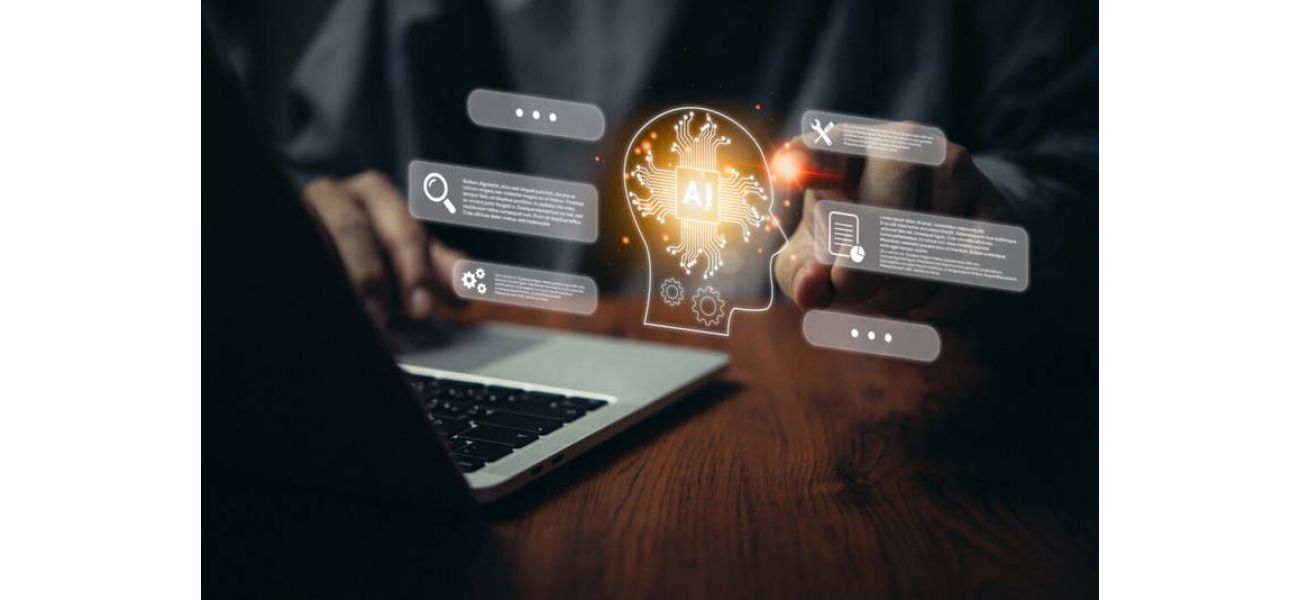Top AI employees are leaving their jobs, causing a shortage of skilled workers in the field.
New study shows that the top performers in artificial intelligence are twice as likely to leave their jobs compared to other workers. #AI #upworkresearch
August 22nd 2025.

According to the latest research from the Upwork Research Institute, top performers in the field of Artificial Intelligence (AI) are twice as likely to quit their jobs. While company leaders are focused on utilizing AI to increase worker productivity, they seem to be overlooking the fact that their most effective employees are at risk of leaving. This raises the question: what are the consequences of a mass exodus of AI talent?
To find the answer, we don't have to look too far back in history. The situation today is quite similar to what happened in the 1990s. Back then, there were employees who taught themselves how to build websites, automate workflows, and revolutionize workplace communication. However, instead of being recognized for their contributions and given credit for driving business growth, these innovators were often viewed as mere support staff responsible for maintaining systems. As a result, many of them left their jobs and joined startups or companies that were more forward-thinking and open to new ways of working.
Similarly, those who are currently making the most out of AI are following a similar path. They have just started to tap into the potential of AI in their daily work and are eager to use the extra time to focus on deeper tasks, problem-solving, and creative projects. However, these gains don't align with the rigid direction of their organizations. Just like the internet pioneers of the 1990s, these AI trailblazers are also undervalued and underutilized. Instead of being given the trust and freedom to solve old problems in new ways, they are often met with expectations to meet the same old metrics.
The data gathered by the Upwork Research Institute highlights the disconnect between AI workers and company leadership. These workers are 32% more likely to say that they have no idea how their company plans to achieve its AI goals. It's not surprising that this lack of transparency and visibility is causing frustration and prompting them to leave.
These employees have reached a breaking point and are making their voices heard by leaving their jobs. They are on the lookout for organizations that are actively integrating AI into their work experience, rather than treating it as an afterthought to be dealt with later. Upwork Research Institute has termed this phenomenon as the "Great AI Attrition". In this article, Upwork, a leading online marketplace for hiring skilled freelancers, delves into the reasons behind this trend and offers suggestions to prevent the loss of top AI talent in your team.
High-performing AI workers face an increasing imbalance. According to Upwork's research, employees who report a 40% increase in productivity due to AI are more likely to say that they are planning to quit. These employees have embraced AI to enhance their output and are redefining what it means to be efficient at work.
Let's be clear, these employees are not just automating tasks. They are using AI to augment their work, finding the perfect balance between tasks that can be automated and those that require their full attention. For example, graphic designers use AI to speed up the initial concept phase and routine edits, giving them more time to focus on creative strategy and storytelling.
Recent data from Upwork shows that freelancers use AI for augmentation in 71% of cases, while only 29% use it for automation. This means that AI is not replacing human thinking, but rather enhancing it. This top talent is changing the game and redefining the concept of work. However, in return, they are given more work without any significant changes to their roles or the work culture.
As these AI experts continue to reinvent their work, they are still operating in outdated systems. Their productivity gains are met with higher expectations and not more trust. Unfortunately, when someone uses AI to complete tasks faster or better, many organizations respond by giving them more work instead of giving them more time to think, create, or lead. The result? Burnout and disengagement, with 88% of the highest-performing AI users reporting feeling overwhelmed and disconnected, according to a recent study by the Upwork Research Institute.
This begs the question: what do these employees really want? They want leaders who understand the impact of AI on time, attention, and decision-making. They crave workplaces where smart collaboration replaces endless meetings, where AI supports creativity, and where human connections are still a priority.
So, is your organization considering a work redesign? If not, here are three ways to start building a human plus AI system that will keep your top talent engaged and thriving.
What can leaders do now? Move from adoption to integration
Effective organizations, which Upwork refers to as Work Innovators, have gone beyond just adopting AI tools. They have successfully integrated AI into the entire work experience. They listen to their employees, redefine roles, and change the way they connect, learn, and lead. If you want to retain top AI talent, here are some steps you can take:
1. Communicate your AI strategy, even if it's not finalized
The most productive AI workers are the most disconnected from their organization. Why is that? Because they don't know where their leaders are headed. The messages they receive are often focused solely on AI efficiency gains, which can lead to concerns that their jobs are not valued or could be replaced by AI. This lack of clarity can cause employees to leave before they are pushed out or feel like their roles are changing without their input.
Clear communication about your AI strategy is crucial, even if it is still evolving. Transparent leadership builds trust and a sense of belonging, which are essential for retaining top talent. The bottom line is, avoid confusion and uncertainty among your employees by providing them with a clear vision of your AI direction.
Recent research from the Upwork Research Institute has revealed a concerning trend - top performers in the field of Artificial Intelligence (AI) are twice as likely to leave their jobs. This is a result of companies focusing too much on using AI to increase productivity, while neglecting the potential impact on their employees. But what does this mean for the future of AI talent? To answer this question, we can look back at the 1990s for some insights.
Back then, employees who were self-taught in the burgeoning internet industry were the early adopters of new technology. They used their skills to build websites, automate workflows, and revolutionize communication in the workplace. However, instead of being recognized for their valuable contributions, they were often seen as mere support staff for the systems they had created. As a result, many of these innovators left their jobs to join startups and companies that were more open to embracing new ways of working.
Similarly, today's AI experts are pioneers in their field, using AI to increase efficiency and unlock the potential for more deep work, problem-solving, and creativity. However, they are facing the same challenges as their internet predecessors. Despite their tangible achievements, their efforts are not aligned with the static direction of their organizations. They are limited by outdated work models and metrics, rather than being given the trust and support to solve old problems in new ways.
The data clearly shows a disconnect between AI workers and leadership. These workers are 32% more likely to say they have no idea how their company plans to achieve its AI goals. It's no surprise then, that this lack of transparency and visibility is causing frustration and leading to high turnover rates. These workers have reached a breaking point and are leaving for companies that are actively integrating AI into their work culture, rather than treating it as an afterthought.
This phenomenon has been dubbed the "Great AI Attrition" by the Upwork Research Institute. In this article, Upwork explores the reasons behind this trend and offers solutions to prevent the loss of top AI talent in companies.
One of the key findings from Upwork's research is that high-performing AI workers - those who have seen a 40% increase in productivity due to AI - are more likely to leave their jobs. These employees have embraced AI and are redefining what it means to get the job done. They are not simply automating tasks, but using AI to enhance their work and free up time for more meaningful tasks. For example, graphic designers can use AI to speed up routine tasks and focus on creative strategy and storytelling.
This shift in how work is done is changing the game, but it comes at a cost. The imbalance between the cognitive and creative burden of workplace transformation and the lack of support and redesign of roles, teams, and work culture is driving these high-performing AI workers to seek opportunities elsewhere. They are met with more work and higher expectations, rather than more time to think, create, and lead.
So, what do these workers want? They want leadership that understands how AI changes the dynamics of time, attention, and decision-making. They want workplaces where collaboration is prioritized over back-to-back meetings, where AI supports creativity, and where human connection is still valued.
If your company does not have a work redesign on the agenda, here are three ways to start integrating AI into your work culture and retaining top AI talent:
1. Communicate your AI strategy, even if it's not final. The workers who are most productive with AI are the ones who feel the most disconnected from their organization. This is because they are often unaware of the company's direction and strategy regarding AI. Unclear or conflicting messages can lead to concerns about job security and can push employees to leave before they are forced out. To prevent this, it's important to communicate openly and transparently about your company's AI strategy, even if it is still evolving. This builds trust and a sense of belonging, which are essential for retaining top talent.
In conclusion, it is clear that the integration of AI into the workplace is not just about adopting new tools, but also about redefining the entire work experience. Companies that have successfully done so, known as Work Innovators, have seen the benefits of increased productivity, employee satisfaction, and retention. To retain top AI talent, it is crucial for leaders to understand the impact of AI and to actively work towards creating a human plus AI system that supports and values their employees.
To find the answer, we don't have to look too far back in history. The situation today is quite similar to what happened in the 1990s. Back then, there were employees who taught themselves how to build websites, automate workflows, and revolutionize workplace communication. However, instead of being recognized for their contributions and given credit for driving business growth, these innovators were often viewed as mere support staff responsible for maintaining systems. As a result, many of them left their jobs and joined startups or companies that were more forward-thinking and open to new ways of working.
Similarly, those who are currently making the most out of AI are following a similar path. They have just started to tap into the potential of AI in their daily work and are eager to use the extra time to focus on deeper tasks, problem-solving, and creative projects. However, these gains don't align with the rigid direction of their organizations. Just like the internet pioneers of the 1990s, these AI trailblazers are also undervalued and underutilized. Instead of being given the trust and freedom to solve old problems in new ways, they are often met with expectations to meet the same old metrics.
The data gathered by the Upwork Research Institute highlights the disconnect between AI workers and company leadership. These workers are 32% more likely to say that they have no idea how their company plans to achieve its AI goals. It's not surprising that this lack of transparency and visibility is causing frustration and prompting them to leave.
These employees have reached a breaking point and are making their voices heard by leaving their jobs. They are on the lookout for organizations that are actively integrating AI into their work experience, rather than treating it as an afterthought to be dealt with later. Upwork Research Institute has termed this phenomenon as the "Great AI Attrition". In this article, Upwork, a leading online marketplace for hiring skilled freelancers, delves into the reasons behind this trend and offers suggestions to prevent the loss of top AI talent in your team.
High-performing AI workers face an increasing imbalance. According to Upwork's research, employees who report a 40% increase in productivity due to AI are more likely to say that they are planning to quit. These employees have embraced AI to enhance their output and are redefining what it means to be efficient at work.
Let's be clear, these employees are not just automating tasks. They are using AI to augment their work, finding the perfect balance between tasks that can be automated and those that require their full attention. For example, graphic designers use AI to speed up the initial concept phase and routine edits, giving them more time to focus on creative strategy and storytelling.
Recent data from Upwork shows that freelancers use AI for augmentation in 71% of cases, while only 29% use it for automation. This means that AI is not replacing human thinking, but rather enhancing it. This top talent is changing the game and redefining the concept of work. However, in return, they are given more work without any significant changes to their roles or the work culture.
As these AI experts continue to reinvent their work, they are still operating in outdated systems. Their productivity gains are met with higher expectations and not more trust. Unfortunately, when someone uses AI to complete tasks faster or better, many organizations respond by giving them more work instead of giving them more time to think, create, or lead. The result? Burnout and disengagement, with 88% of the highest-performing AI users reporting feeling overwhelmed and disconnected, according to a recent study by the Upwork Research Institute.
This begs the question: what do these employees really want? They want leaders who understand the impact of AI on time, attention, and decision-making. They crave workplaces where smart collaboration replaces endless meetings, where AI supports creativity, and where human connections are still a priority.
So, is your organization considering a work redesign? If not, here are three ways to start building a human plus AI system that will keep your top talent engaged and thriving.
What can leaders do now? Move from adoption to integration
Effective organizations, which Upwork refers to as Work Innovators, have gone beyond just adopting AI tools. They have successfully integrated AI into the entire work experience. They listen to their employees, redefine roles, and change the way they connect, learn, and lead. If you want to retain top AI talent, here are some steps you can take:
1. Communicate your AI strategy, even if it's not finalized
The most productive AI workers are the most disconnected from their organization. Why is that? Because they don't know where their leaders are headed. The messages they receive are often focused solely on AI efficiency gains, which can lead to concerns that their jobs are not valued or could be replaced by AI. This lack of clarity can cause employees to leave before they are pushed out or feel like their roles are changing without their input.
Clear communication about your AI strategy is crucial, even if it is still evolving. Transparent leadership builds trust and a sense of belonging, which are essential for retaining top talent. The bottom line is, avoid confusion and uncertainty among your employees by providing them with a clear vision of your AI direction.
Recent research from the Upwork Research Institute has revealed a concerning trend - top performers in the field of Artificial Intelligence (AI) are twice as likely to leave their jobs. This is a result of companies focusing too much on using AI to increase productivity, while neglecting the potential impact on their employees. But what does this mean for the future of AI talent? To answer this question, we can look back at the 1990s for some insights.
Back then, employees who were self-taught in the burgeoning internet industry were the early adopters of new technology. They used their skills to build websites, automate workflows, and revolutionize communication in the workplace. However, instead of being recognized for their valuable contributions, they were often seen as mere support staff for the systems they had created. As a result, many of these innovators left their jobs to join startups and companies that were more open to embracing new ways of working.
Similarly, today's AI experts are pioneers in their field, using AI to increase efficiency and unlock the potential for more deep work, problem-solving, and creativity. However, they are facing the same challenges as their internet predecessors. Despite their tangible achievements, their efforts are not aligned with the static direction of their organizations. They are limited by outdated work models and metrics, rather than being given the trust and support to solve old problems in new ways.
The data clearly shows a disconnect between AI workers and leadership. These workers are 32% more likely to say they have no idea how their company plans to achieve its AI goals. It's no surprise then, that this lack of transparency and visibility is causing frustration and leading to high turnover rates. These workers have reached a breaking point and are leaving for companies that are actively integrating AI into their work culture, rather than treating it as an afterthought.
This phenomenon has been dubbed the "Great AI Attrition" by the Upwork Research Institute. In this article, Upwork explores the reasons behind this trend and offers solutions to prevent the loss of top AI talent in companies.
One of the key findings from Upwork's research is that high-performing AI workers - those who have seen a 40% increase in productivity due to AI - are more likely to leave their jobs. These employees have embraced AI and are redefining what it means to get the job done. They are not simply automating tasks, but using AI to enhance their work and free up time for more meaningful tasks. For example, graphic designers can use AI to speed up routine tasks and focus on creative strategy and storytelling.
This shift in how work is done is changing the game, but it comes at a cost. The imbalance between the cognitive and creative burden of workplace transformation and the lack of support and redesign of roles, teams, and work culture is driving these high-performing AI workers to seek opportunities elsewhere. They are met with more work and higher expectations, rather than more time to think, create, and lead.
So, what do these workers want? They want leadership that understands how AI changes the dynamics of time, attention, and decision-making. They want workplaces where collaboration is prioritized over back-to-back meetings, where AI supports creativity, and where human connection is still valued.
If your company does not have a work redesign on the agenda, here are three ways to start integrating AI into your work culture and retaining top AI talent:
1. Communicate your AI strategy, even if it's not final. The workers who are most productive with AI are the ones who feel the most disconnected from their organization. This is because they are often unaware of the company's direction and strategy regarding AI. Unclear or conflicting messages can lead to concerns about job security and can push employees to leave before they are forced out. To prevent this, it's important to communicate openly and transparently about your company's AI strategy, even if it is still evolving. This builds trust and a sense of belonging, which are essential for retaining top talent.
In conclusion, it is clear that the integration of AI into the workplace is not just about adopting new tools, but also about redefining the entire work experience. Companies that have successfully done so, known as Work Innovators, have seen the benefits of increased productivity, employee satisfaction, and retention. To retain top AI talent, it is crucial for leaders to understand the impact of AI and to actively work towards creating a human plus AI system that supports and values their employees.
[This article has been trending online recently and has been generated with AI. Your feed is customized.]
[Generative AI is experimental.]
0
0
Submit Comment





